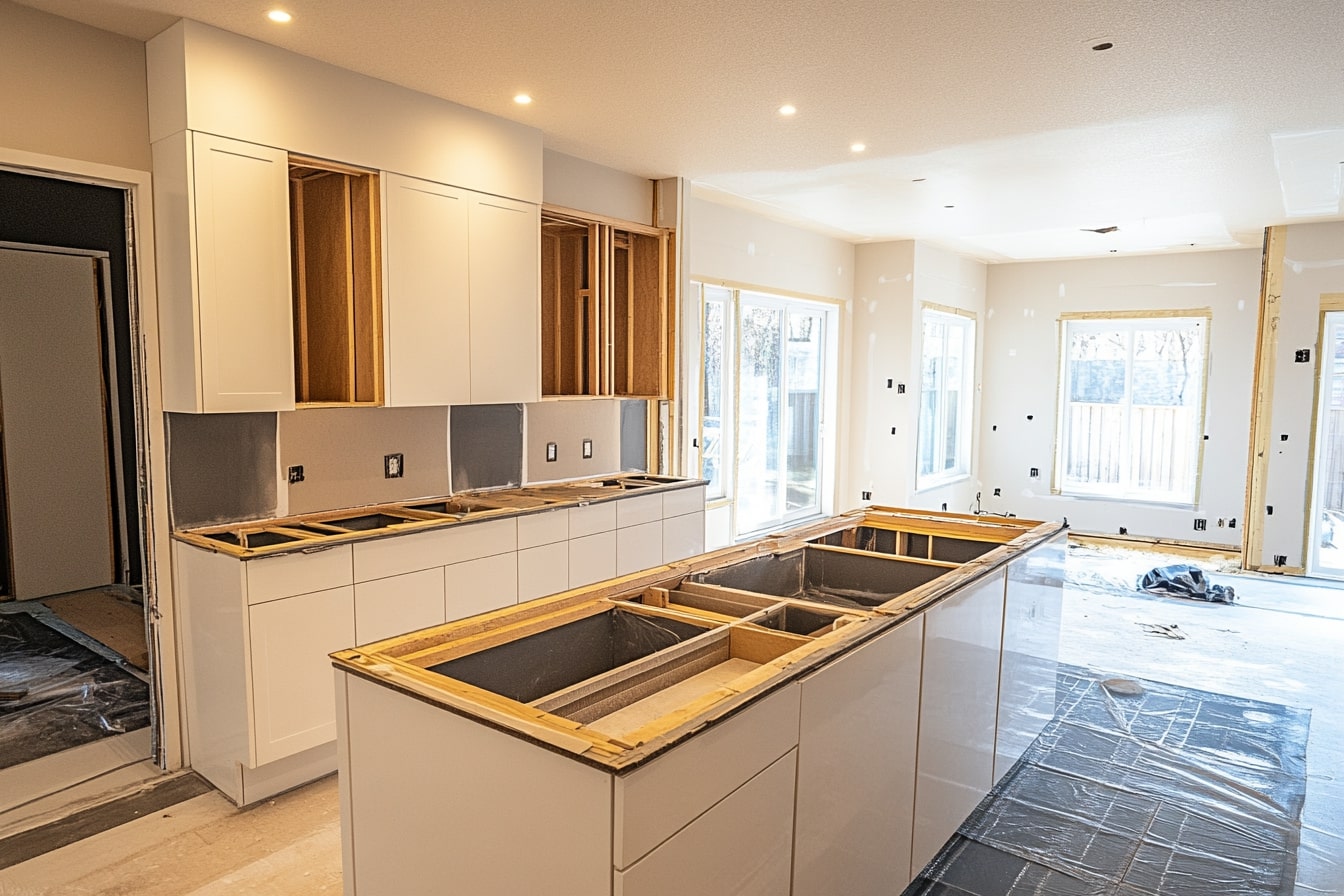From Style to Function: Kitchen Trends and Renovation Advice for 2025
The kitchen has evolved beyond its traditional role as a cooking space to become the central hub of modern homes. As we approach 2025, homeowners are increasingly seeking kitchens that blend cutting-edge aesthetics with practical functionality. Whether you're planning a complete renovation or a minor update, understanding the latest design movements, innovative storage solutions, and technology integration can transform your kitchen into a space that's both beautiful and highly efficient. This comprehensive guide explores the most influential kitchen trends for 2025 and provides practical renovation advice to help you create a kitchen that perfectly balances style and function.

The Evolution of Kitchen Design: 2025 Trends
The kitchen design landscape is shifting dramatically as we move into 2025. Minimalism continues its reign but with warmer undertones, replacing stark white kitchens with softer neutrals and natural elements. Biophilic design principles are gaining momentum, with increased incorporation of plants, natural materials, and organic textures. Sustainable materials are no longer optional but expected, with recycled glass countertops, bamboo cabinetry, and reclaimed wood features becoming mainstream choices. Color trends show a move toward earthy tones and jewel-inspired accents, with deep greens, blues, and terracotta making strong statements against neutral backgrounds. The pandemic’s influence remains evident as multifunctional spaces continue to dominate design considerations, with kitchens doubling as work areas and entertaining zones.
Smart Technology Integration in Modern Kitchens
Technology integration is revolutionizing kitchen functionality for 2025. Smart appliances now offer unprecedented convenience, from refrigerators that track inventory and suggest recipes based on available ingredients to ovens that can be preheated remotely via smartphone apps. Voice-activated assistants specifically designed for kitchen environments allow hands-free control of lighting, music, timers, and even appliance operations. Energy efficiency has become a primary consideration, with smart systems monitoring and optimizing power consumption. Touchless technology, initially embraced for hygiene during the pandemic, has become a permanent fixture in modern kitchens, with motion-sensor faucets, automatic trash bins, and proximity-activated lighting systems. The truly connected kitchen ecosystem now allows appliances to communicate with each other, creating seamless cooking experiences.
Space-Saving Solutions for Kitchens of All Sizes
Maximizing functionality in limited space remains a key challenge for kitchen design in 2025. Vertical storage is being embraced more creatively, with ceiling-height cabinetry featuring motorized shelving systems for easy access to upper compartments. Hidden storage innovations continue to evolve, with specialized drawers designed for specific items and pull-out pantries that maximize corner spaces. Multifunctional islands have become the heart of kitchen design, incorporating prep areas, seating, storage, and sometimes appliances within a single unit. Slim-profile appliances designed specifically for smaller kitchens deliver full functionality without compromising valuable space. The “less is more” approach extends to decluttering strategies, with designers focusing on creating spaces for essential items while eliminating rarely used gadgets and accessories.
Sustainable and Eco-Friendly Kitchen Renovation Approaches
Environmental consciousness is shaping kitchen renovations like never before. Sustainable material choices extend beyond obvious elements to include eco-friendly adhesives, low-VOC finishes, and responsibly sourced wood products. Energy-efficient appliances are now considered standard, with buyers seeking the highest possible energy ratings and water-saving features. Circular design principles encourage the repurposing of existing elements through refinishing cabinets, updating hardware, or reimagining layout rather than complete replacement. Waste reduction systems have become more sophisticated, with composting stations integrated directly into kitchen design alongside advanced recycling centers. Local sourcing of materials and labor has gained importance both for environmental reasons and to support regional economies.
Cost Considerations for Kitchen Remodeling in 2025
Understanding the financial implications of kitchen renovations has never been more important as material costs continue to fluctuate. The scope of renovation significantly impacts overall expenditure, with cosmetic updates averaging $10,000-$15,000, while major renovations involving structural changes typically range from $30,000-$80,000 or more for luxury upgrades. Material selection creates the widest cost variations, particularly for countertops, cabinetry, and flooring.
| Material Type | Standard Quality Cost | Premium Quality Cost |
|---|---|---|
| Cabinetry (10x10 kitchen) | $4,000-$10,000 | $12,000-$35,000+ |
| Countertops (per sq ft) | $15-$40 (laminate, butcher block) | $70-$200 (quartz, natural stone) |
| Flooring (per sq ft) | $2-$10 (vinyl, laminate) | $15-$35 (hardwood, tile) |
| Appliance Package | $3,500-$8,000 | $10,000-$25,000+ |
Prices, rates, or cost estimates mentioned in this article are based on the latest available information but may change over time. Independent research is advised before making financial decisions.
Labor costs typically account for 30-35% of total renovation budgets, with specialized skills commanding premium rates. Unexpected expenses often arise during renovations; industry experts recommend setting aside a contingency fund of 15-20% beyond the initial budget to address unforeseen issues like electrical upgrades, plumbing complications, or structural concerns discovered during demolition.
The Remodeling Process: Timeline and Planning Tips
Successful kitchen renovations start with meticulous planning. Creating a realistic timeline is essential: cosmetic updates might require 4-6 weeks, while complete renovations typically take 8-12 weeks or longer. The design phase should never be rushed, with professionals recommending 1-3 months for concept development, material selection, and detailed planning before construction begins. Permitting requirements vary by location but can add 2-6 weeks to your timeline. Temporary kitchen solutions deserve serious consideration, with homeowners creating functional cooking spaces in other areas of the home using portable appliances, microwave cooking, and simplified meal planning. Working with professionals significantly improves outcomes, with experienced designers helping navigate material choices, spatial planning, and technical requirements while contractors coordinate subcontractors and maintain quality standards.
The 2025 kitchen combines aesthetic appeal with unprecedented functionality through thoughtful design, innovative storage solutions, and integrated technology. By considering current trends while focusing on timeless elements that add lasting value, homeowners can create kitchens that remain relevant and functional for years to come. Whether embracing sustainable materials, incorporating smart technology, or maximizing limited space, successful kitchen renovations balance personal style preferences with practical needs to create truly livable spaces that enhance daily life.




